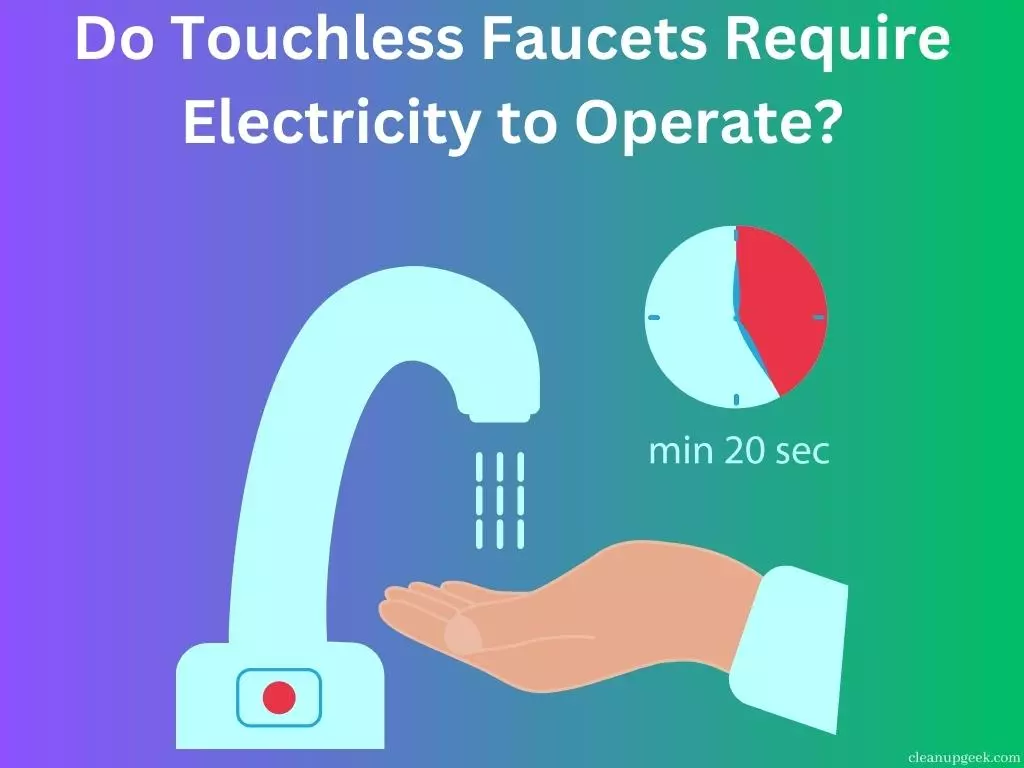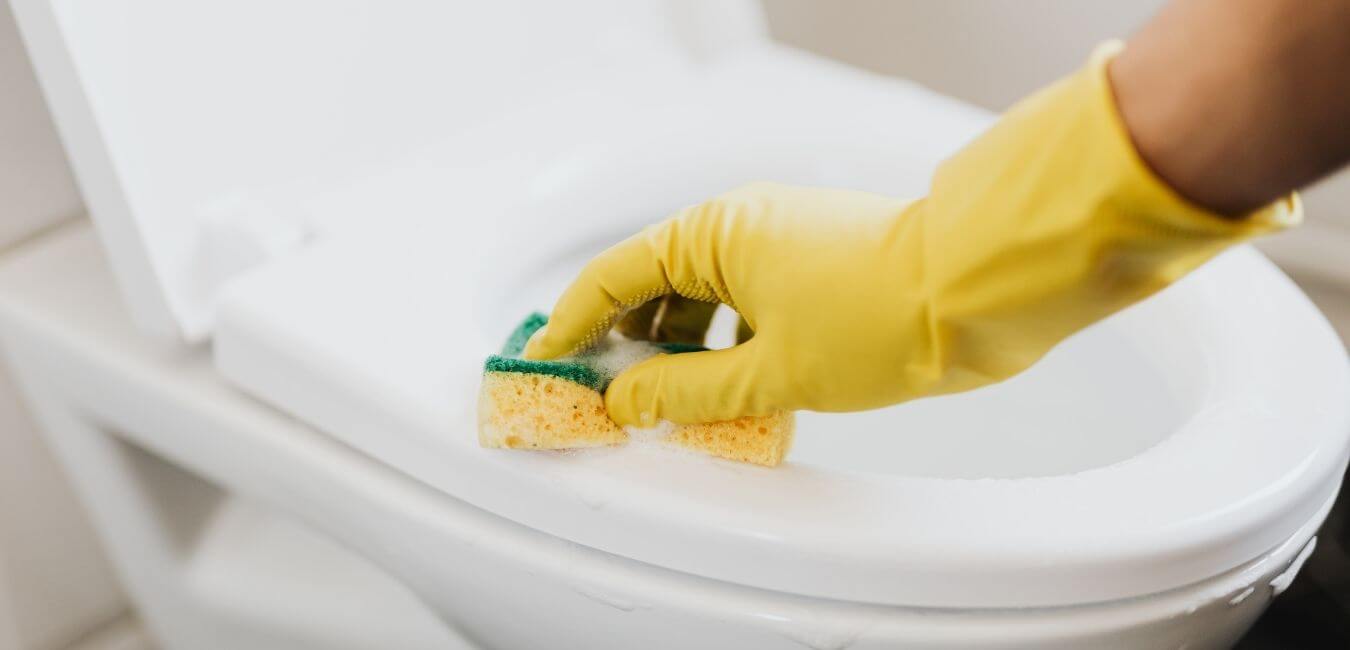Does your touchless faucets puzzle you with its magical operation? While seemingly complicated, all automatic faucets require a power source to function.
This article seeks to unravel the mystery behind these hygienic marvels and their energy requirements.
Keep reading as we dive into a world where technology meets practicality in service of clean hands!
KEY INFORMATION
- Touchless faucets require electricity to operate.
- Motion sensor technology and solenoid valve operation are key components of touchless faucets.
- They can be powered by AC adapters or DC batteries.
- Some touchless faucets offer alternative power sources, such as solar energy.
How Do Touchless Faucets Work?

Touchless faucets work using motion sensor technology and solenoid valve operation. The motion sensor detects the presence of a person’s hand and activates the solenoid valve to release water, allowing for a touch-free experience.
1. Motion sensor technology
Motion sensor technology is at the heart of touchless faucets. It uses electricity to work. The sensors can tell if a hand is near. Then, they send a message to the faucet to start the water flow.
This smart technology means there’s no need to touch the faucet! It cuts down on germs and keeps things clean.
2. Solenoid valve operation
The solenoid valve is an essential part of touchless faucets. It helps control the flow of water by opening and closing based on the signals it receives. When a user approaches the faucet, the motion sensor detects their presence and sends a signal to the solenoid valve.
The valve then opens up, allowing water to flow through the faucet. Once the user walks away or removes their hands, another signal is sent to the solenoid valve, causing it to close and stop the water flow.
This operation ensures that water is only used when needed, helping conserve energy and reduce waste.
Power Sources for Touchless Faucets
Touchless faucets can be powered by either an AC adapter or DC batteries, providing flexibility in choosing the power source that best suits your needs.
1. AC adapter type
Most touchless faucets can be powered by an AC adapter. This type of power source allows the faucet to connect directly to an electrical outlet, providing a continuous and reliable supply of electricity.
With an AC adapter, you don’t need to worry about replacing batteries or running out of power. It’s a convenient option for those who want a hassle-free operation for their touchless faucets.
2. DC battery type
Some touchless faucets use DC batteries as their power source. These batteries provide the necessary electricity to operate the motion sensors and solenoid valves in the faucet. Depending on the model, these batteries can last for a considerable amount of time before needing replacement.
Using DC batteries allows for flexibility in installation since these faucets do not require a nearby outlet or infrastructure. By utilizing battery power, touchless faucets can still function even during power outages or in locations without electrical access.
Battery Replacement for Touchless Faucets
When it comes to battery replacement for touchless faucets, there are various types of batteries used and their life expectancy can vary.
1. Types of batteries used
Touchless faucets that require batteries typically use either AA or AAA batteries. The type of battery used will depend on the specific model and brand of the faucet. It’s important to note that not all touchless faucets rely on batteries for power; some can be connected directly to a power source through a plug.
However, if your touchless faucet does require batteries, it’s crucial to ensure they are replaced regularly to maintain proper functionality. Battery life expectancy may vary depending on the usage and quality of the batteries used.
2. Battery life expectancy
The battery life of touchless faucets can vary depending on the model and usage. Here are some facts about battery life expectancy for touchless faucets:
- Batteries used in touchless faucets can last anywhere from 1 to 3 years, depending on the quality and type of batteries.
- Some touchless faucets have low – energy consumption, which helps extend the battery life.
- Battery-powered touchless faucets typically come with a warning light or indicator that alerts users when the batteries are running low.
- It is recommended to replace the batteries as soon as they are depleted to ensure uninterrupted operation.
- Regularly cleaning the sensor area can help prolong battery life by preventing false activation and unnecessary energy consumption.
- High-quality batteries with longer shelf life are recommended for touchless faucets to maximize their performance and durability.
Alternatives to Electrical Power

Some touchless faucets offer alternative power sources such as solar-powered options or manual operation for areas with limited electrical infrastructure.
1. Solar-powered touchless faucets
Solar-powered touchless faucets are an alternative option for powering your automatic faucet without relying on electricity or batteries. These faucets use solar panels to harness energy from the sun and convert it into power.
The solar energy is stored in rechargeable batteries, which then supply the necessary electricity to operate the motion sensors and solenoid valves of the touchless faucet. This means that you can have a hygienic and water-saving faucet without needing to worry about changing batteries or having access to an electrical outlet.
Solar-powered touchless faucets are a great choice for environmentally-conscious individuals who want a sustainable and low-energy solution for their cleaning needs.
2. Manual operation options
Some touchless faucets offer manual operation options, giving users the flexibility to choose between automatic or manual control. These faucets have both touch and sensor functionalities, allowing you to turn on the water by touching the faucet when desired.
This feature can be especially helpful if there is a power outage or if you prefer traditional faucet operation. With these manual options, you can still enjoy the convenience of a touchless faucet while having the choice to use it in a more familiar way.
FAQs

1. Do touchless faucets require electricity to operate?
Yes, most types of touchless faucets like electric faucets and sensor-activated faucets need electricity to work.
2. Are all touchless bathroom faucets powered by an outlet?
No, not all! Some are battery-powered faucets while others are plug-in faucets that require a GFCI outlet.
3. Can motion sensor faucets run without power?
Motion sensors or hands-free faucets need a little power for the solenoid valve but can conserve energy due to their automatic shut-off feature.
4. What is the standard design for installing a touchless faucet?
The standard design includes both manual operation and sensor-operated features which helps in cases where there’s an issue with the power source
5. Does using low-energy or water-saving hygienic faucets cut down on energy use?
Yes! Low-energy models including those of water-saving taps help you save on your bills by reducing running costs.
Conclusion and final thoughts
In conclusion, touchless faucets do require electricity to operate. The motion sensors and solenoid valves used in these faucets need power to function properly.
While some models may use batteries or solar power as an alternative, most touchless faucets rely on electricity from a nearby outlet or AC adapter for consistent operation.










